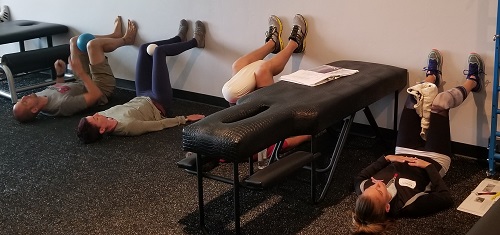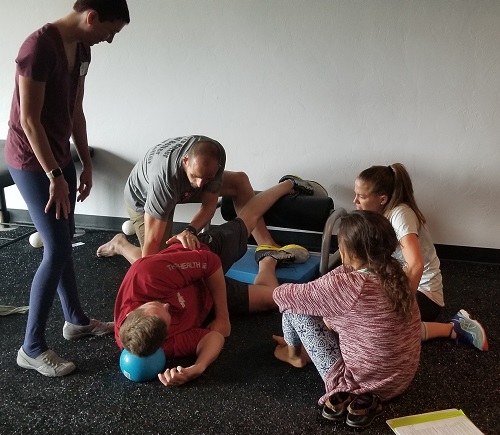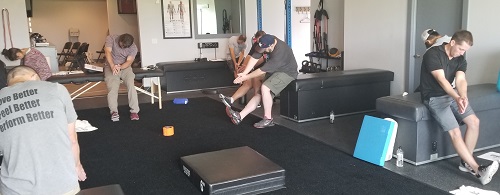Diversity is a wonderful thing. So is variability. And we were blessed to have both in abundance last weekend in Norman, OK. We had a very diverse group of movement and rehab specialists, with expertise ranging from working with professional athletes to dancers to pelvic floor specialists.
Variability was in abundance as we discussed getting out of patterned neuromechanical behavior. In order to get out of the performance rut that the L AIC pattern puts some of us in, we need to have variability. As we delved into how to recognize normal mechanics, normal compensatory mechanics, and pathological compensatory mechanics as a result of the L AIC pattern, the need for variability started to become clear. Then we progressed into our muscular patterned behavior conversation as a result of the dominant L AIC pattern. Additionally, we discussed the muscular performance consequence of the L AIC pattern.
As we further discussed testing and repositioning, it became more and more clear that variability in position is the key. We were very fortunate to have a lot of lab time; as much or more lab time as any other course I’ve taught. It afforded us the opportunity to feel the effect our human asymmetry has on our position, as well as our muscular performance. As a result, our ability to be variable in our movement patterns became our clear goal.
Many thanks to Alicia Oberholzer and Dustin Rhoades for allowing us to use them as our models for demonstration purposes. It was a great pleasure to have everyone ask so many great questions. Stuart Nichols, Kim Callahan, Deb Clark, and Kathy Bonar were particularly helpful in keeping us on track, re-stating, and offering their insight into our deep dive into the necessity of movement variability and how to achieve it. As always, we need more "Bruce Wayne" and less "Batman" in our lives, and make sure you have the "Good Boy Band" working for you!





